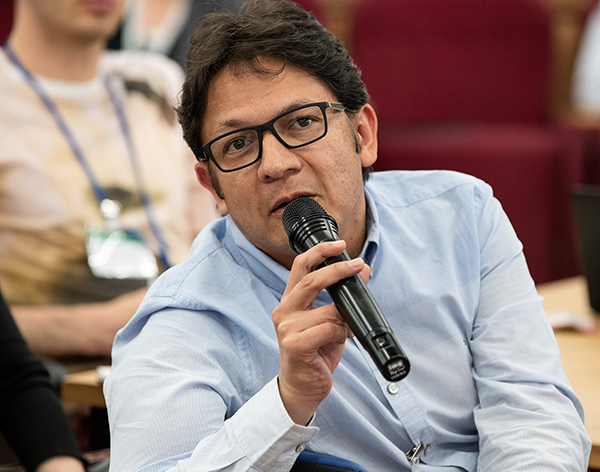Woman planting seedlings at a model farm in Cote d'Ivoire (@UN-REDD)
Almost ten years after the release of concluding guidance on policy approaches and incentives to foster forest-solutions that contribute to climate change mitigation through REDD+, predictable results-based finance (RBF) are facing new challenges.
The Parties that gathered at COP21 in Paris urged the Green Climate Fund (GCF) to: i) operationalize results-based payments (RBP) for REDD+ activities; ii) consider the mobilization of private sector finance to progress the GCF’s forestry-related result areas; and iii) consider COP decisions referring to support for alternative policy approaches, such as joint mitigation and adaptation approaches for the integral and sustainable management of forests in its funding decisions. In response, the GCF established the pilot programme for REDD-plus RBPs in October 2017, seeking to operationalize REDD+ RBP and gather experience with GCF resources in RBPs.
Through the terms of reference and a scorecard consistent with the Warsaw Framework (WF) for REDD+, the GCF piloted REDD+ RBPs. Demonstrating efficiency in approving emission reductions funding proposals, within just three years, the USD 500 million envelope was exhausted by the GCF’s 27th Board (B.27); this was two years in advance of what was planned. Through this programme, the GCF channelled non-market RBF for REDD+ to eight countries for approximately 2.5 billion tCO2eq in emissions reductions, achieved between 2014 and 2018.
During B.25, the GCF Secretariat presented a mid-term review of the REDD+ pilot programme; this flagged the early exhaustion of the envelope, while outlining a series of lessons learned in relation to the technical elements of the programme. The Board requested the Secretariat further analyse alternatives for the continuation of the programme, while acknowledging diverging opinions amongst Board members concerning the future of pilot and RBPs under the GCF, and highlighting the high demand from countries and COP’s guidance concerning the operationalization of RBF for forests under the Paris Agreement.
In doing so, consistent with requests from several Board members, informal discussions were undertaken, including: 1) interviews with interested members of the Board and observers; 2) preparation of a background document summarizing key issues identified during the interviews; 3) expert meetings to discuss the key issues identified; and 4) a call for inputs on some of the more detailed elements of the TOR for the next phase of REDD+ RBP under the GCF. Discussions are currently underway.
In parallel, with the UN-REDD support, various REDD+ countries have advanced in readiness and implementation phases towards RBPs. Countries have made significant progress in the Measurement, Reporting and Verification (MRV) of result-based actions following the UNFCCC WF guidance. As of today, 56 countries have submitted 75 FREL/FRL, of which 18 have submitted technical annexes with results of the implementation of REDD+ activities reaching 11.5 billion t-CO2eq. Similarly, 16 countries have submitted national strategy or action plans, and 24 have submitted summaries of information on how the Cancun Safeguards are being addressed, informing the environmental and social integrity of REDD+ implementation.
Other options for REDD+ RBPs were consolidated, as in the case of the World Bank Carbon Fund, and new initiatives have emerged, such as the Lowering Emissions by Accelerating Forest finance (LEAF) Coalition and other voluntary carbon market mechanisms. Although these entail alternative standards of accounting, applicable safeguards and technical requirements, they are oftentimes technically more challenging than those agreed under the Paris Agreement. While providing additional opportunities to countries to access RBPs, including, under market and non-market approaches, this difference in methodological requirements to secure and channel RBF for forests has resulted in a technical gap which poses a challenge to countries to access RBPs.
To date, the GCF’s pilot has successfully allocated around 0.1 billion/year in the form of REDD+ RBPs to be disbursed in the next five to six years. In parallel, voluntary carbon markets with an emphasis on forest and nature-based credits ballooned in 2021, demonstrating the increasing interest of private sector investments in RBF.
Despite commitments and pledges, as emphasized by SOFO 2022, there’s a need to triple the financing for forests to meet climate, biodiversity and land degradation neutrality targets by 2030 (to more than USD 200 billion per year). Working with a view to increase the number of countries to secure RBPs, the GCF continues to play a key role in contributing to the provision of adequate and predictable RBF in a manner consistent with the methodological aspects agreed upon by the Parties through the Article 5.2 of the Paris Agreement, including ensuring environmental integrity is preserved.
Through Decision 6 of the COP26 in Glasgow, Parties urged the GCF to finalize work concerning establishing and strengthening financing for forests in three aspects; this involves the continuation of REDD+ RBPs, as per its mandate under the Paris Agreement, the mobilization of private finance and support for alternative policy approaches for the integral and sustainable management of forests. Questions remain open that concern the future of a RBPs programme under the GCF, as one of the operating entities of the financial mechanism of the Convention, such as, how much RBF should be secured under the GCF, and how RBPs should be channeled under the GCF in a way that enables countries to reinvest the proceeds of RBPs into the achievement of their NDC targets.
Co-authors:
- Maria Garcia Espinosa
- Naoko Takahashi
- Serena Fortuna
